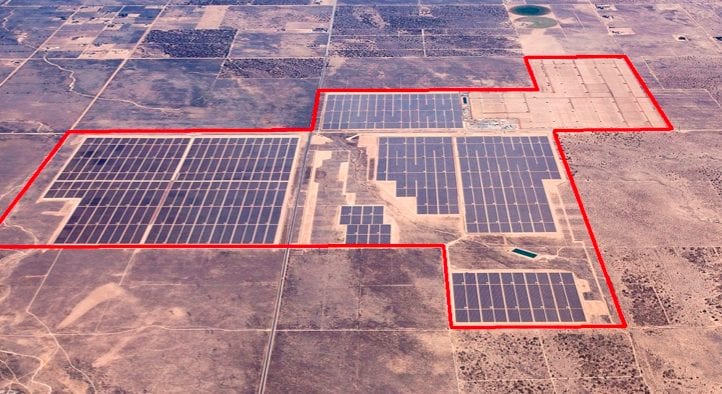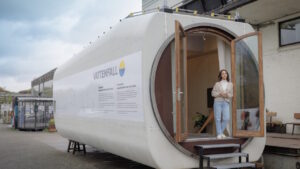In California in solar installations, it is the sheer scale of the projects that takes the breath away.
In Australia, to the country’s great embarrassment, there is just a single utility scale solar PV project, of just 10MW. That was built by First Solar and completed last year.
At the AVSR1 project in the Antelope Valley in the high deserts behind Los Angeles, First Solar expects to complete the 250MW (AC) installation later this year.
That will be the biggest in the state, for a short time. Three other projects are under construction, or about to commence, in the state that have capacities of more than 500MW. First Solar’s own pipeline includes the 550MW Topaz and Desert Sunlight projects in the same state, and the 300MW Stateline solar project. Its 290MW Agua Caliente solar farm in Arizona is currently the largest.
Even in the Antelope Valley, which enjoys excellent solar resources because of its cloudless days and high eleveation (around 800m) there will be 800MW of utility scale solar PV completed by First Solar and other developers within the next 18 months – and another 25 projects are under consideration. (See our interview with Lancaster mayor Rex Parris for his plans to make the area the solar capital of the world)
To give another perspective of the difference between the US and Australia in utility scale solar – the highest rates of installation at AVSR1, First Solar was installing up to 8MW (nearly Australia’s entire large scale capacity) in a single week, at a single plant. (Some key dimensions of the projects are given below)
The final phase of the AVSR1 project will be the construction of 52MW of solar capacity mounted on a single-axis tracking system, the largest such installation to date.
First Solar expects that to deliver around 13 to 14 per cent more output from the same modules, and enable it to increase output in the shoulder periods of its production – particularly the late afternoon peak when electricity demand is highest. “Fixed tilt is going to give you more bang for your back,” says Tony Perrino, the project manager.
These large solar projects are also attracting mainstream investors. They only way they get built is when they strike power purchase agreements with the local utilities – in California, the utilities have to meet a 33 per cent renewable energy target by 2020.
Once these have been signed, large investors are brought in. In the case of AVSR1, it was Exelon (the largest nuclear operator in the US), while Warren Buffet, NRG (the country largest generator), and Next Era, formerly Florida Light and Power, are other owners of major solar projects.
While the build-out in California has been driven by its renewable energy target, other states are creating demand for solar by phasing out fossil fuels. The neighbouring state of Nevada, also sun-rich, announced it April it will phase out its two coal-fired generators, both more than 500MW each, and replace them will solar and gas.
James Woodruff, First Solar’s vice president of state and local government affairs, says that will crate space for around 1,300MW of solar capacity to be built in that state. “That’s a big deal,” he tells RenewEconomy at the AVSR1 site. “The cost of retrofitting coal plants is so big. Utilities are recognising that it is just too dammed expensive.”
Here are some of First Solar’s key metrics for the AVSR1 project. Note the number of modules – 3.7 million.











